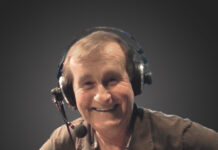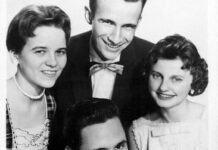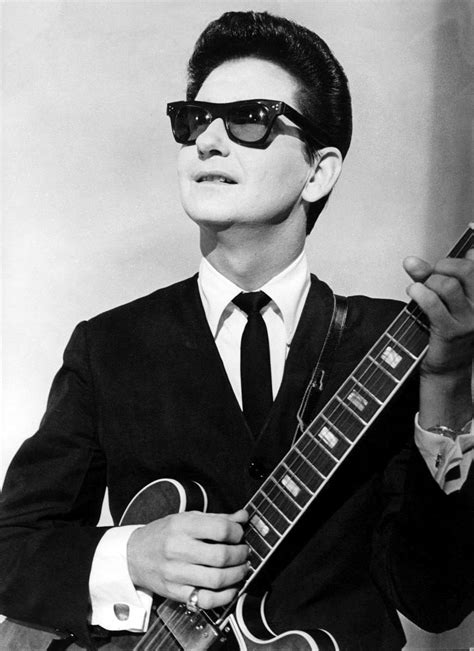By Ben Fong-Torres, Radio Columnist, San Francisco Chronicle
Published Friday, January 2, 2015
.
- Young Ben Fong-Torres with then-morning DJ Gary Owens outside KEWB radio station, circa 1960.
This Wednesday, I turn 70. I know; this column doesn’t look it. But facts are facts, and here’s another one: I have been turning out a radio column every other Sunday since July 2004. Through rain, sleet, a trip to Dubai and a hip replacement surgery, Radio Waves has gone on.
So, as a birthday gift to myself, I’ll stop typing and run an excerpt (slightly edited) from my 1998 book on the history of Top 40 radio, “The Hits Just Keep on Coming.”
What was it about the radio? Why do so many people recall, so easily, those many teenage nights when they’d feign sleep while they listened to a favorite DJ or music show on a transistor radio under their pillow?
For many American kids, that portable radio signified independence, an escape from the standard entertainment: the huge console radio or television set in the living room, whose programming was controlled by their parents. The music coming out of that miraculously small radio — especially the rock ’n’ roll and the jumpy country music and the fluid harmonies of doo-wop — differed enough from the pop crooners adults listened to that teenagers could embrace it as their own. And the disc jockey, with his energy, his jive lingo, his knowledge of the latest goings-on, was an entertainer in his own right, a star, reachable by a phone call or a visit to a sock hop.
For most kids, it was liberation and entertainment. Especially for me. I was raised in Chinatown restaurants and doomed to a young life of chores and schoolwork, a combination that left little time for hobbies or friends. But I had the radio.
The music came by way of nightly shows called “The Burgie Music Box” and “Lucky Lager Dance Time.” I remember the sometimes clumsy mix of middle-of-the-road pop and teen hits in the Lucky Lager Top 10 countdowns: “Young Love” by Tab Hunter followed by “Canadian Sunset” by Hugo Winterhalter; then “My Prayer” by the Platters … then Elvis with “Don’t Be Cruel.”
When, in the fall of 1956, the Bay Area got its first Top 40 station, KOBY, my sister Sarah brought home their surveys. Now, those rankings of the most popular songs came in printed form, and I found a hobby.
Before I could collect even a short stack of surveys, however, I had to leave town. In the summer of 1957, my father became a partner in a restaurant in Amarillo, Texas, and took me along. There, I turned even more to the radio. In the Panhandle, KFDA played equal parts country and rock ’n’ roll. I heard as much Marty Robbins and Marvin Rainwater as I did Chuck Berry and Buddy Holly. I didn’t know it then, but Top 40 meant democracy in radio.
Soon after getting back to Oakland, I caught on to a new station, KEWB, and, in particular, to its morning DJ, Gary Owens.
I don’t recall how I did it, but I got a job there in the fall of 1960 as a Saturday assistant to one of the newscasters, Jack Morris. I’d pull college football scores off the wire machine and relay them to him. Every Saturday morning, I floated to the studios on Franklin Street. I don’t remember how much I made, but just getting past the guard — I was, after all, an employee — was payment enough for me.
I was a confirmed radio nut, and, at Oakland High, although held captive after school, snapping at innocent customers at various restaurants, I worked to do anything even approximating what broadcasters did. I won office as commissioner of assemblies. That meant that I could open the weekly gatherings of the student body with comedy monologues. And, given the most minute of openings, I’d book KEWB disc jockeys for guest appearances.
In the cafeteria, I sometimes set up a sound system and spun records, and began getting hired to be a DJ at dances. With my after-school schedule, I couldn’t be among the social elite. But, on occasion, I could be the guy playing the records for them.
Being a Chinese American kid in the early ’60s, I knew it was a pipe dream, but I fantasized about someday becoming a disc jockey.
We didn’t have the money to buy a record player, so our first phonograph was one that my brother Barry had patched together. He got a children’s 78-rpm model at a thrift shop and honed the capstan down until the speed decreased to 45, then mounted it onto a cigar box.
No matter how funky the hardware, I loved acting out my fantasy. I had a knack for mimicking voices and DJ patter; I learned the rhythms of Top 40 radio; and I practiced the art of the talk-up — that is, talking over the instrumental beginning of a song, concluding just before the vocal begins. I’d even tape commercials and jingles off the radio to insert between records.
You might think that I was an unemployable nut. But I would become a reporter and editor at my college daily (at San Francisco State) and then, just a couple of years after graduation, an editor at Rolling Stone, the rock publication that, soon enough, became the arbiter of all that was hip. To our way of group thinking, what was groovy was free-form rock on the emerging FM dial. What was square? Top 40.
I was torn. But, invariably, under my bylines on stories about media, I was a traitor to my first love, and I turned my coat so effectively that, three decades later, when I finally met the DJ Robert W. Morgan, he greeted me as, “Ah, yes, the Rolling Stone anti-Top 40-christ!” I could only hang my head. I had been a fan of the format — and, in particular, of Morgan and “The Real” Don Steele when they brightened up KEWB in 1964 — but he was right. Now and again, I did let my true sentiments show. In Rolling Stone’s first years, in the late ’60s, the Boss Radio format ruled Top 40. Programmer Bill Drake’s concept included the placement of newscasts at 20 minutes past or before the hour: “20/20 News.”
And in “Random Notes,” which I oversaw, how did I invariably introduce a long paragraph of short items? “20/20 News.”
Top 40, Baby!
Ben Fong-Torres is a freelance writer. E-mail:
sa********@sf*********.com
” href=”mailto:sa********@sf*********.com” data-original-string=”AFLAFne+8T5DIIoQjgYqtg==d53AKHYR2+1xbar3clUOjSYIJKnuVjMHd0OdLpP4QQr3Rg=” title=”This contact has been encoded by Anti-Spam by CleanTalk. Click to decode. To finish the decoding make sure that JavaScript is enabled in your browser.”>
sa********@sf*********.com
http://www.sfgate.com/entertainment/radiowaves/article/As-Fong-Torres-nears-70-radio-memories-are-made-5990828.php








